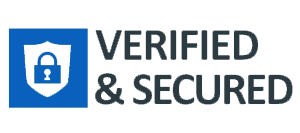For businesses, acquiring and maintaining the latest equipment can be a costly endeavor. Equipment leasing emerges as a feasible alternative, offering benefits like manageable monthly payments and the flexibility to upgrade to newer models. This guide explores equipment leasing, helping business owners weigh the decision to lease versus purchase.
Defining Equipment Leasing Equipment leasing is a financial arrangement where businesses rent equipment instead of buying it. This includes machinery, vehicles, and computers. At the end of the lease term, you can return the equipment, renew the lease, or purchase the equipment.
Unlike equipment financing, where a loan is taken to buy equipment, leasing doesn’t result in ownership after the lease ends. Leasing involves interest and fees within monthly payments and may include additional charges for insurance, maintenance, and repairs. Although more costly in the long run, leasing provides a quick solution for businesses with limited capital.
How It Works Entering an equipment lease means signing an agreement with the equipment owner, detailing the lease duration and monthly payments. Lease conditions vary, and often you have the option to purchase the equipment at the end of the lease at market value or less.
Lease rates depend on the leasing company and your business credit score. Online applications for leases are quick, and it’s important to find a leasing company that specializes in your industry. Lease terms generally range from three to ten years.
Advantages of Leasing Equipment
- Lower Initial Costs: Many leases don’t require a large down payment.
- Regular Upgrades: Leasing allows for regular equipment updates without the burden of obsolescence.
- Scalability: Upgrading equipment to meet growing business demands is easier with leasing.
- Tax Incentives: Many leases qualify for tax credits, potentially allowing deductions as business expenses under Section 179.
Starting with Equipment Leasing Before opting for leasing, consider the following:
- Budget Considerations: Determine your monthly budget for equipment costs, ensuring it aligns with your cash flow.
- Duration of Use: Short-term needs often make leasing more cost-effective. For longer-term use, other financing methods might be more suitable.
The Leasing Process Expect these steps when applying for a lease:
- Application Submission: Prepare your business financials for the application process.
- Approval and Processing: Approval typically occurs within 24 to 48 hours. For higher amounts, more detailed financials and a business plan may be required.
- Finalizing the Lease: Once approved, review and sign the lease agreement, often accompanied by the first payment.
Commencement: After the lessor accepts the signed documents and payment, the lease starts, and you can receive the equipment.


